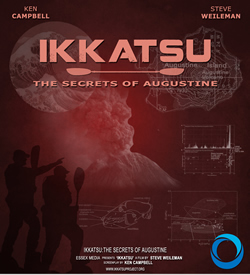The Duke of York
 say his real name, the way his mother intended. He was seen as royalty, however, in his own way, and his measured demeanor and regal bearing apparently entitled him to more than some simple, common moniker.
say his real name, the way his mother intended. He was seen as royalty, however, in his own way, and his measured demeanor and regal bearing apparently entitled him to more than some simple, common moniker.A band of about 200 Clallams, from one of the tribes located to the west of Port Townsend, had landed on a Straits beach just around the corner from Point Wilson, and were busy getting drunk and preparing a total assault on the young community. Tensions were running high between whites and natives that summer. Just a few weeks earlier, a band of marauding Kake Indians had landed on Whidbey Island and killed Colonel Isaac Ebey at the door of his house, removing his head and taking it back with them with them when they left.
The Duke visited the war party and over the course of a few hours, tried to persuade them to abandon their plot. It didn’t take long for them to suspect him of being a collaborator with the town folk and, although he was able to get away, the issue was in doubt for a time. Reporting back to Port Townsend community representatives that night, the Duke told them:
“If I am seen coming to you I will not be able to help you further. But each morning I will sit on top of the big rock on the east side of Kai Tai Valley. If you are still in danger I will keep my blanket over my head and then you will know that you must have your guns handy and your women  and children where they will be safe, for they will surely be captured and held as slaves. If the danger passes, I will stand up, throw off my blanket and give a great shout. Then you will know that you are safe.”
and children where they will be safe, for they will surely be captured and held as slaves. If the danger passes, I will stand up, throw off my blanket and give a great shout. Then you will know that you are safe.”
The seige, such as it was, lasted for nine days. Each morning, the Duke sat at his station (still there today and known as Sentinel Rock). The settlers watched him intently as he perched there motionless, his blanket covering his head. The war council at West Beach continued, led by Kloweston, the chief of the the Clallams, who was at this time a very old man. His son, William Allen Kloweston, met clandestinely with the Duke and worked to talk the intruders back from the brink of open conflict. For over a week it seemed as though the die had been cast, and a fight was inevitable.
On the morning of the tenth day, the Duke arrived at the rock once again and sat briefly on his heels before rising to his feet, throwing off his blanket, and giving out with a loud and sustained shout, letting the settlers know that the Clallams had been dissuaded from attacking. The town was saved and the occupants were immensely grateful to their dusky friend.
Old Kloweston, on the other hand, was not pleased with the outcome. He viewed the diplomacy that had been carried out as pure cowardice on the part of his son and , in a rage, he doused the younger man’s campfire with water, putting it out. In the world of the Clallam, there could be no greater insult. Later that same evening, William Allan Kloweston drifted off into the forest on his own and, filled with what must have been an unbearable disgrace, hung himself.
Suicide was virtually unknown among the Clallams. The untimely death of his son by his own hand drove Kloweston to an anguish he could barely contain. With a contrite heart and a new understanding that the violence had to stop, he contacted the settlers directly and asked them to attend his son’s funeral. A declaration of peace was drawn up between the two parties before the Clallams left for their homes and from that time onward, there were no further threats of violence.










